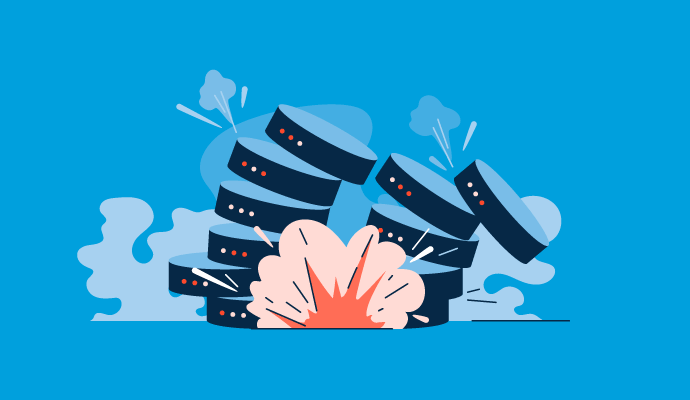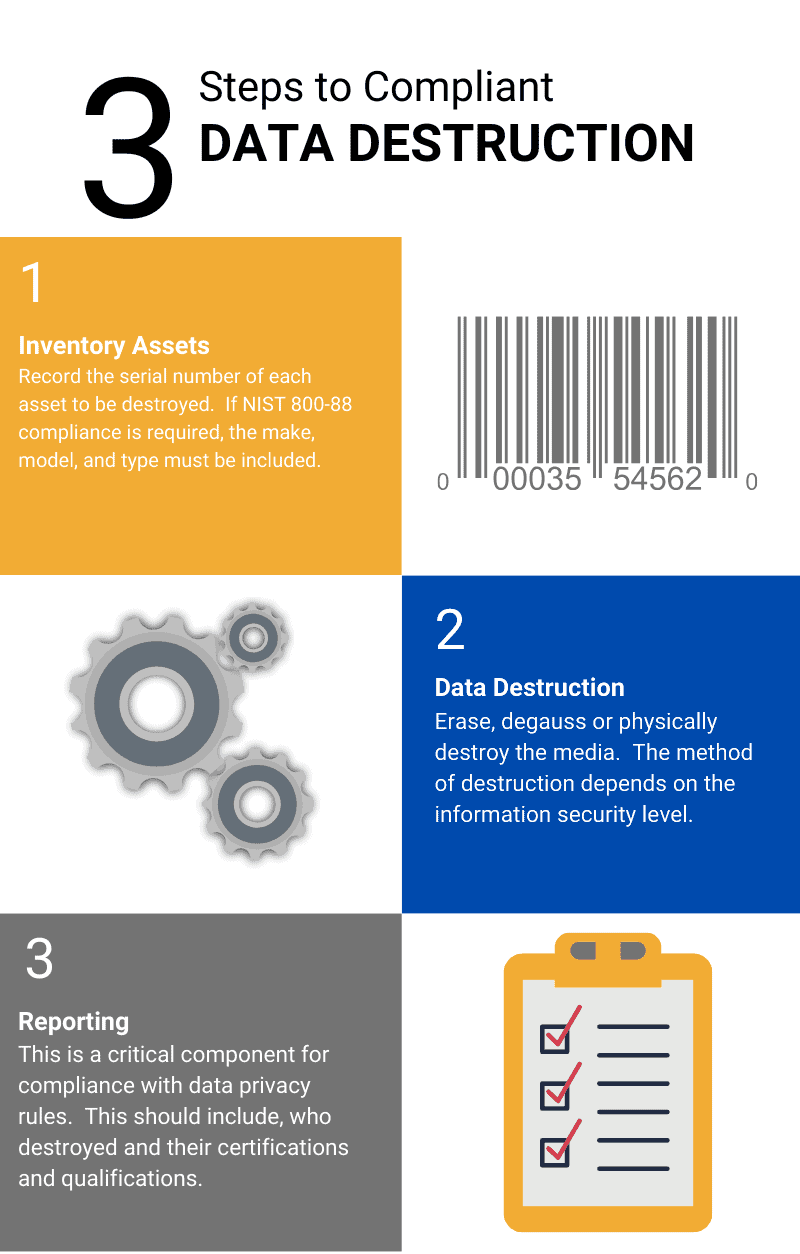How to Incorporate Data Destruction Techniques right into Your Cyber Security Method
How to Incorporate Data Destruction Techniques right into Your Cyber Security Method
Blog Article
The Importance of Effective Data Damage Practices in Shielding Sensitive Details and Ensuring Computer System Safety And Security
In an age where information breaches are significantly common, the value of reliable information devastation practices can not be overstated. Organizations face significant dangers when delicate information is improperly gotten rid of, possibly bring about unapproved gain access to and serious monetary consequences. Carrying out durable data damage techniques not only alleviates these dangers however likewise lines up with legal compliance requirements, ensuring that organizations copyright their track record and foster client trust. The concern stays: what specific strategies can be employed to enhance these practices, and just how can organizations successfully incorporate them right into their total cybersecurity structure?
Comprehending Data Devastation
Understanding information destruction is important in today's digital landscape, where delicate information can quickly be endangered. Reliable data damage involves not just guaranteeing but removing files that information is irretrievable via comprehensive methods. This process is crucial for companies that manage personal client info, copyright, or internal records, as any kind of violation can lead to serious financial and reputational repercussions.
Data devastation encompasses various methods, consisting of shredding physical media, degaussing magnetic storage space gadgets, and employing software-based solutions that overwrite information multiple times. Each technique serves a certain function and must align with the sensitivity of the info being gotten rid of. Physical devastation is typically preferred for difficult drives having very confidential data, while software techniques may be sufficient for much less sensitive information.
In addition, sticking to market requirements and policies, such as the General Information Defense Policy (GDPR) or the Medical Insurance Transportability and Responsibility Act (HIPAA), is critical for conformity and to alleviate lawful threats. Organizations has to develop a robust information damage plan, train staff members on best practices, and routinely examine their treatments to ensure that all sensitive info is gotten rid of safely and properly.
Dangers of Inadequate Practices
Inadequate information devastation techniques expose companies to substantial risks that can have significant repercussions. When delicate details is not correctly dealt with, it remains vulnerable to unapproved access, which can bring about information breaches and identity theft. Such incidents not only endanger the protection of individuals however additionally stain the organization's online reputation, resulting in a loss of consumer count on and potential monetary effects.
Moreover, regulative conformity is increasingly rigid in numerous sectors. Failing to stick to information damage policies can cause significant fines and lawsuits versus organizations. These charges can draw away and strain monetary sources interest from core organization operations.
On top of that, the misuse of recurring information can result in copyright theft or business espionage, endangering competitive benefits (data destruction). The impact of inadequate information destruction extends past prompt monetary losses; it can also lead to long-lasting damage to brand name integrity and market setting

Organizations should identify that data safety and security is not only concerning preventing violations; it also includes the liable administration of information throughout its lifecycle. Overlooking effective data damage methods can have disastrous ramifications, underscoring the requirement for robust steps to mitigate these threats.
Ideal Practices for Information Devastation
Applying reliable data devastation methods is necessary for safeguarding sensitive info and keeping conformity with regulative criteria. Organizations needs to embrace a multi-faceted strategy to guarantee that data is irretrievable, therefore stopping unauthorized gain access to and potential breaches.
First, information must be additional reading classified based upon sensitivity, allowing companies to use suitable damage approaches customized to the degree of danger. For digital information, making use of software-based data-wiping tools that comply with sector criteria can efficiently overwrite existing data. Physical devastation techniques, such as shredding or degaussing, are vital for devices that store delicate information, making sure complete elimination.
Establishing a clear information retention plan is crucial, outlining exactly how long various kinds of details need to be kept before devastation. Normal audits of information storage space systems are likewise required to identify unnecessary or obsolete information needing elimination.
Furthermore, training staff members on the significance of information destruction and the certain protocols to adhere to fosters a culture of safety and security within the company. Finally, maintaining documentation of information destruction refines offers responsibility and sustains conformity with exterior policies and inner policies. By sticking to these finest techniques, companies can considerably mitigate the risks connected with information direct exposure.
Legal and Conformity Factors To Consider

Failure to follow these regulations can result in serious penalties, including substantial fines and reputational damage. Organizations must apply a durable data destruction plan that aligns with these lawful structures and offers clear guidelines on the appropriate techniques of information disposal, whether physical shredding or electronic cleaning.
Furthermore, preserving documentation of information damage tasks is vital for demonstrating compliance throughout audits or assessments. By focusing on legal and conformity considerations, companies can enhance their information security position and foster trust fund with clients and stakeholders, ultimately adding to a much more safe data management setting.
Advantages of Effective Data Destruction
Effective data destruction practices expand beyond mere compliance; they offer considerable benefits to companies that prioritize them. By making certain that delicate details is irretrievably damaged, organizations reduce the threat of information violations and the possible monetary repercussions connected with them. This proactive strategy not just safeguards against unapproved access however also improves the total reliability of the organization in the eyes of stakeholders and customers.
Applying durable data devastation approaches, such as physical destruction of storage tools or advanced data wiping methods, adds to the conditioning of a company's cybersecurity stance. data destruction. It reduces the likelihood of intellectual home theft and shields proprietary information, thus maintaining an affordable side on the market

Verdict
In conclusion, effective data damage methods are vital for safeguarding sensitive info and enhancing overall computer system safety. Ultimately, a commitment to robust data devastation methods fosters a culture of obligation, thereby enhancing an organization's cybersecurity pose and preserving client count on.

Report this page